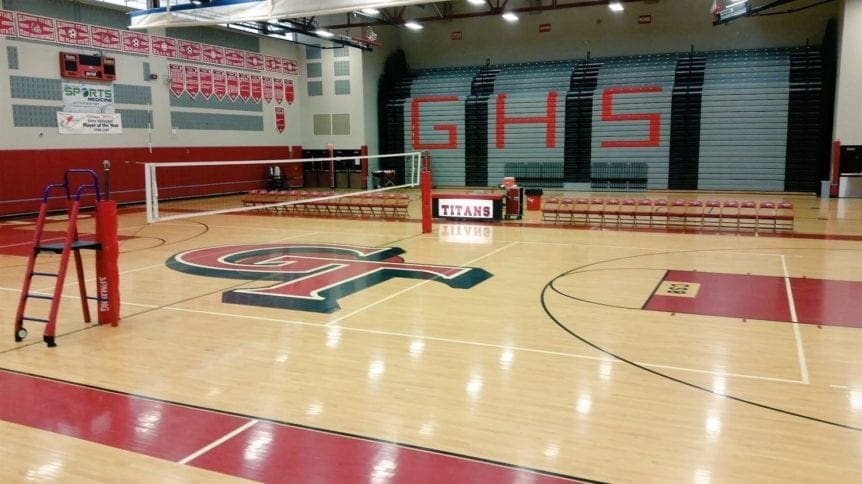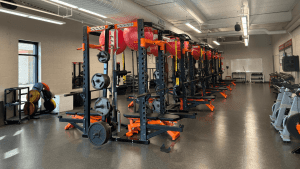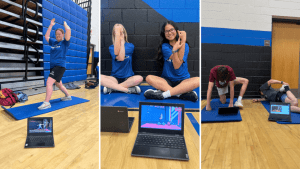Multi-Grade PE: Controlling the Chaos
You’re a PE teacher.
You’ve been tasked with teaching fitness and weight training to both students and athletes at your school.
You’ve been given classes of mixed-grades and ability throughout every day, all year long.
AND, you’ve been asked to work hand-in-hand with coaches and sports teams to drive complete athletic development.
Talk about a Herculean task.
How are you supposed to teach a progressional curriculum? How do you perform any actual instruction if everyone is at different stages? Who do you focus on? What programs do the different groups perform? How do you know what everyone is doing at the same time?
No other subject, subjects (pun totally intended) its teachers to this type of torture. It is a seriously daunting expectation. If you’ve lived it, you know.
Like many PE departments across the country, Sara Hogan and her colleagues at Glenwood High in Illinois were tasked with such a responsibility, and set out to find a “better way”.
Organization is KEY
Sara Hogan and her colleagues knew that if anything else were to work, they must first streamline how their fitness classes were run from an administrative standpoint.
Previously, classes were given a mix of BFS, daily workouts plucked from websites like STACK.com, and “sport-specific” workouts governed by outside coaches. These programs were delivered via the whiteboard and old school “pen and paper”.
It was chaotic, and Sara Hogan and her staff felt completely disorganized.
As Sara Hogan recalls, “with all of the files, loose papers, and an overflowing file cabinet – kids frequently couldn’t even find their plan for a given class”.
Their first instinct was to “go digital”.

Trying out an online management software like PLT4M allowed the department to deliver all of their content direct to kids devices and school Chromebooks. With flexible scheduling and grouping, students could be given workouts tailored to their grade/experience level or status as an athlete. All at the same time.
Additionally, they had visibility into real-time activity and work completion.
“Running different workouts simultaneously in class is so much easier. Kids come in, pull up their workout and get to work. If I need to check on someone, I can pull up their workout in real time or use the Time Stamps after the fact to make sure they did what they were supposed to.”
Now, freshman can receive guided introductory fitness programs, experienced athletes receive personalized performance programs and coaches, in turn, have visibility into each and every student while they worked.
A Focus on TEACHING
Perhaps the greatest result of the new approach was the freedom for teachers to truly engage with their students in class again.
The addition of a strength coach in the hand of every student, or a digital “textbook” per se, allowed students to take much greater ownership of their class time.
Fully developed lesson plans and easy to access educational videos for every element of the programs were both “essential in continuing the education in class”. Sara, in fact, implemented a rule that highlighted this new accountability:
“Before asking a question of the teacher in the room, you must watch the relevant video and read its accompanying description in an effort to find the answer yourself.”
Instead of minimizing the teacher, the added resource of a personalized training app for each student actually highlighted the value of the teacher, and resulted in 2 phenomenal things…
- 1-on-1 Instruction: Teachers were less focused on administrative questions, like “what movement comes next?” or “what does this exercise mean again?” and free to focus on technique and individual instruction as needed once the class began.
- “Peer-to-peer” instruction: After the teacher led the class with the day’s main lessons, kids could review content at their own pace, and support one another as they learned and practiced.
In the end, it became an environment that every subject teacher wants – one in which their time is spent actually teaching, and working with kids that need extra instruction, rather than fielding administrative questions and review.
Fitness UNITED
In the end, the hoped-for goal was simple: UNITY.
Where chaos had once previously reigned now stood a testament to organization, planning, and results:
A cohesive curriculum that allows every student to learn along the same trajectory, universal language and grading, and a partnership between PE and Athletics.
Nowadays, Sara Hogan and the other PE teachers at Glenwood are able to spend their time and energy doing what they love – TEACHING.
And that, as they say, is what it is all about.









